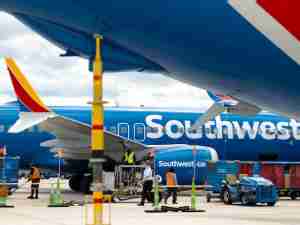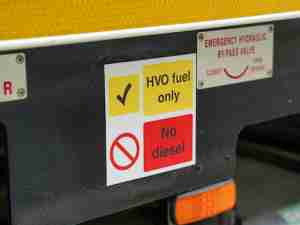Alaska Bets on Bulk With $2.6 Billion Virgin America Acquisition
By: | Apr 04 2016 at 04:33 PM | Air Cargo
From an initial overture five months ago through a two-day bidding war last week, Alaska Air Group Inc. was determined to acquire Virgin America Inc. as a means toward national expansion—and protection from larger rivals.
The combination boosts Alaska’s West Coast might with greater access to California, while providing more service to flight-constrained East Coast cities such as New York and Washington. The deal also provides extra bulk against four bigger airlines that control more than 80 percent of the domestic market and have waged war against both Alaska and Virgin.
“The industry is becoming more concentrated,” Alaska Chief Executive Officer Brad Tilden said on a conference call Monday. “For Alaska, it says scale is relevant and we think it is a good idea for us to have a larger scale to work from.”
Alaska will pay $2.6 billion in cash for Virgin America, or $57 a share, beating out an offer from JetBlue Airways Corp. The winning bid is a 47 percent premium to Virgin America’s closing price on Friday and 86 percent above its value March 22, the day before Bloomberg News first reported a possible deal for the Richard Branson-backed airline was in the works. The transaction is valued at $4 billion including debt and capitalized aircraft leases.
Virgin America surged 42 percent to close at $55.11 in New York, reaching the highest level since its 2014 initial public offering. Alaska fell 3.8 percent to $78.92.
Cross-Country Flights
The takeover will expand Alaska’s route network out of Washington, Oregon and Alaska, adding the important business centers of Los Angeles and San Francisco and rights to operate at New York’s LaGuardia and Kennedy, New Jersey’s Newark Liberty and Washington’s Reagan National airports, where the U.S. limits flights. Cross-country routes between New York and California are among the most lucrative in the domestic industry.
Alaska, which hopes to now become the carrier of choice in California, has invested $3 billion in a new fleet of airplanes, pared $1.2 billion in debt and has an investment-grade balance sheet. It’s been profitable on an annual basis since 2009.
“We are operating from a position of strength,” Tilden said. “We are confident in our ability to run the airline. We’re getting increasingly confident about the industry itself. The industry structure has changed. We’re optimistic about the long-term case for U.S. airlines.”
Branding Question
The company will retain the Alaska Air name, brand and Seattle headquarters. It will explore with Branson’s company how the Virgin America brand “could continue to serve a role in driving customer acquisition and loyalty,” Alaska said.
The combined carriers may be better positioned to fend off, or at least withstand, challenges from larger rivals. Delta Air Lines Inc. has expanded aggressively in Seattle, establishing a West Coast hub and jumping-off point to Asia. The Atlanta-based carrier wants to almost triple the number of airport gates it holds in Seattle to 30.
Virgin America has faced its own competitive battles, most recently being caught in a Dallas price war involving Southwest Airlines Co., American Airlines Group Inc. and Spirit Airlines Inc. In February, Virgin America CEO David Cush said he would rather fly out of the city with empty seats than sell tickets at rates so deeply discounted that the carrier can’t make money. Similar pricing skirmishes have flared in Chicago involving United Continental Holdings Inc., one of the four biggest airlines, along with Delta, American and Southwest.
‘Growth Opportunities’
“Competitive challenges continue to rise and growth opportunities outside core markets are modest absent the merger,” Daniel McKenzie, an analyst at Buckingham Research Group, said in a note Monday. Virgin America’s outlook as a stand-alone airline would be “challenged,” he said.
Mo Garfinkle, an airline-industry consultant who has advised companies and investors in previous mergers, said the deal is “offensive and defensive,” giving Alaska valuable airport footholds while keeping JetBlue out of its territory.
Position of Strength
“This ends up being a preemptive, defensive measure” against the four biggest airlines when another downturn hits the U.S. industry, Cush said in an interview. “Merging while both airlines are strong, have good balance sheets, generating lots of profit, but with an open eye on making sure we’re in the best possible position should the legacies start to turn up the heat that much more.”
Tilden first reached out informally to Virgin America last November through its chairman, Don Carty, a former CEO at American Airlines. Meetings between senior management at both carriers followed and initial information was exchanged in December.
“At that point, we told them if they were interested in doing additional analysis, we needed to see something more formal,” Cush said. “They came up with a number high enough above what our market price was so that there was a substantial premium already, and they had the resources to close the deal.”
Cush contacted JetBlue CEO Robin Hayes early this year, piquing the New York-based carrier’s interest in a possible combination, a person familiar with the process said. Virgin America would provide JetBlue instant access to a network along the West Coast to pair with its heavily north-south system focused in the eastern U.S. The two airlines fly planes made by Airbus Group SE and have similar cultures and values.
Multiple Bids
Multiple rounds of bidding occurred over the past few weeks, with the back and forth accelerating on March 31 and April 1. JetBlue, mindful of efforts in recent years to pay down debt and repair its balance sheet, withdrew from the process late April 1 when the bidding topped the maximum it could offer.
“JetBlue’s bid was fairly close to Alaska’s, not significantly below it,” Cush said. “My view is they had a maximum number they were going to go to. They went to that number and, give them credit, they had the discipline not to be drawn offside in the heat of the deal. They simply hit their maximum.”
JetBlue said by e-mail that it stepped away after deciding, based on the price, that its plan for organic growth “offered a better path to create value.”
The $2.6 billion price tag is “easily digestible,” for Alaska, Tilden said. “This is something we felt was perhaps a one-time opportunity to get a stronger foothold in California, something we felt was going to benefit us immediately but also in the years and decades ahead.”









